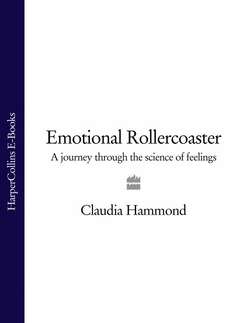Читать книгу Emotional Rollercoaster: A Journey Through the Science of Feelings - Claudia Hammond - Страница 28
the disgusted brain
ОглавлениеThe fact that the facial expression for disgust is so striking reflects the significance of our ability both to convey disgust and to detect it in others. If one person tastes contaminated food everyone else needs to know to stay away from it. The disgust face is so central to this communication that the brain has a specific mechanism for detecting disgust in others. Mary Phillips and her colleagues at the Institute of Psychiatry in London asked volunteers to lie in a brain scanner while they were shown photographs of people displaying facial expressions of either disgust or fear. Cleverly, Dr Phillips set them the task of deciding whether the photograph was of a man or a woman in order to distract them from focusing on trying to identify the expression. Despite the fact that the emotion expressed was irrelevant to the task, the scan nevertheless demonstrated activity in different parts of the volunteer’s brain depending on whether the person in the photograph looked frightened or disgusted.
Deep inside the brain there’s a walnut-shaped area called the amygdala which has tended to be thought of as the seat of all the emotions but with disgust this proved not to be the case. Instead, two areas of the brain are stimulated by disgust – the basal ganglia and the anterior insula, which are both very old parts of the brain in evolutionary terms. People with Huntingdon’s disease have difficulty recognising expressions of disgust which is logical since Huntingdon’s damages the basal ganglia. Extraordinarily, even carriers of the Huntingdon’s gene who do not yet have symptoms of the disease have a reduced capacity for spotting the expression of disgust.
If you were to take a brain and peel back the temporal lobe or side of the brain and look deep inside, behind the ear, you would find a large pyramid-shaped structure known as the insula, a name derived from the Latin for island. The front of this pyramid or anterior insula is the area which responds when we taste strong flavours like salt. This neural link between disgust and taste is intriguing because it lends weight to the idea that disgust exists to protect us from contaminated food. The fact that disgust is found in such an old part of the brain might explain why it is an emotion which is so hard to overcome even when you know there’s no reason to find something disgusting. Even infants who have been born without functioning cerebral hemispheres show expressions of disgust at bitter tastes. This type of instinctive disgust involves no thinking, reflected in the fact that the insula is not associated with brain regions involved in thought and reasoning. This suggests that our brains are hard-wired for us to learn about disgust.
